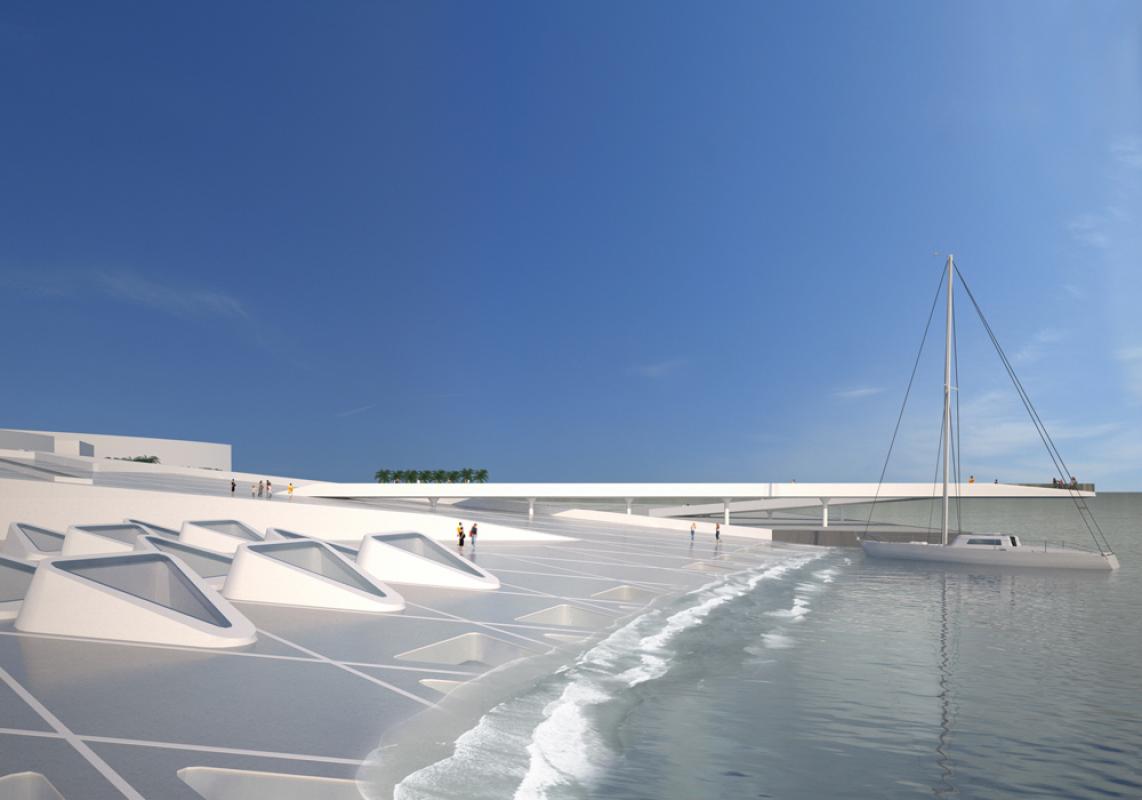DMMRC – Dubai Maritime Museum & Research Center
Relating to both the sea and the city and in constant dialogue between them, the building is an extension of the city to the sea and vice-versa. Conceived as a continuation and a transition through the wide public space, the building dives into the ocean and merges with it. It develops as a triangular sharp form, which concentrates the public routes to the museum, through an inviting shape that draws visitors to the entrance and distributes them to the interior. The museum itself is an artifact, an artificial underwater environment organized under an immense glass roof that has been designed in order to give the maximum view of the ocean and intensify the feeling of diving into the seabed. By optimizing the maritime-themed environment and combining it with breathtaking underwater views, the museum reflects in a sincere manner its function. The building is simultaneously a vessel that supports the idea of the journey. Interior space is organized through cascading platforms that develop in a successive and continuous manner, allowing visitors to have a panoramic and clear overview of the whole museum’s interior, under a «water roof». Generous internal height allows the perception of wide interior views and the display of artifacts of significant scale. Inside this wide space, collection is divided in entities such as marine life, marine technology, supervisory material, interactive educational and experimental exhibits, aquariums, video projections and digital representations as well as underwater photography exhibitions. Presentation of the museum’s collection happens in a direct relation with the ocean’s setting, since the artificial manmade space is fully integrated into the natural underwater environment.Natural light enters the building through the glass ceiling and as the building sinks, space narrows and the light’s intensity gradually reduces, detaching the building from the surface and making it part of the ocean.
![[Studio Niko Kapa - DMMRC – Dubai Maritime Museum & Research Center - COVER IMG]](https://architectureprizecom.s3-us-west-2.amazonaws.com/uploads/large/large_1465549006.jpg)



